Table of contents
Ground cinnamon ( cinnamon powder ) is the powdered bark of various cinnamon trees ( Cinnamomum ). Cassia cinnamon usually makes up the majority of commercially available cinnamon powder, which in turn means more of the controversial ingredient coumarin. Ceylon cinnamon is rarer and more expensive. Cinnamon is available raw and in organic quality.
Using cinnamon in the kitchen:
What is cinnamon? Cinnamon is a classic spice that is often added to sweet dishes in European countries such as apple sauce, compote, casseroles and fruit salads. To season semolina porridge or rice pudding (vegan), a little ground cinnamon is traditionally used. In the run-up to Christmas, cakes, biscuits and pastries are refined with cinnamon powder. On the other hand, drinks such as mulled wine, punch or liqueurs get their cinnamon aroma mainly from the cinnamon stick .
In Far Eastern countries, cinnamon is also used to season savoury or spicy dishes. In many places, ground cinnamon is a component of spice mixtures that are added to fragrant rice dishes. In India, it is used to refine curries and chutneys. There is also cinnamon-flavoured chewing gum, but this is artificially produced.
When preparing it, it is important to remember that cinnamon can develop a bitter aftertaste after prolonged cooking (heating). Therefore, always add ground cinnamon to the dish shortly before serving.
In Europe, the ground form of cinnamon predominates - raw, but rarely organic. The quality of Ceylon cinnamon imported into Europe is often called "Hamburg", which unfortunately indicates the poorest quality of the sticks. With ground cinnamon, you can usually no longer tell the difference in taste between the individual types of cinnamon. Cinnamon powder is often a mixture of Ceylon cinnamon ( Cinnamomum verum or C. zeylanicum , often from Sri Lanka), Chinese cinnamon, cinnamon cassia or cassia cinnamon ( Cinnamomum cassia ) and Indonesian cinnamon ( Cinnamomum burmannii ). Because the price difference is enormous, cinnamon mixtures contain very little Ceylon cinnamon.
Cinnamon powder (ground) can also be found diluted with various substances: nut, almond, cocoa shell powder, sandalwood, wood, tree bark flour, cinnamon waste (chips), oil seed residues, palm kernel flour, clove stalks, galangal, pear flour or iron ochre (iron hydroxides). 1
Recipe for tea with cinnamon (ground):
To prepare cinnamon tea, put hot water and a teaspoon of ground cinnamon (raw, organic?) in a pot and heat the mixture to around 60 °C. After a short cooling phase, add agave syrup (or whole cane sugar ) and dissolve it well. Then you can enjoy the warming tea.
Vegan recipes with ground cinnamon can be found under the note: " Recipes that have the most of this ingredient ".
| Not only vegans or vegetarians should read this: Vegans often eat unhealthily. Avoidable nutritional mistakes . |
Shopping - where to buy ground cinnamon?
Powdered cinnamon (raw) can be bought in most supermarket chains such as Coop , Migros , Denner , Volg , Spar , Aldi , Lidl , Rewe , Edeka , Hofer , Billa etc., usually under the name "ground cinnamon". Which cinnamon is better: Cassia or Ceylon? The cheaper cinnamon powder consists mainly of ground Chinese cinnamon (Cassia) with a small proportion of the finer and more expensive Ceylon cinnamon. The coumarin content in Cassia cinnamon is significantly higher than in pure Ceylon cinnamon. The better, more expensive variant is only available in selected supermarkets, organic supermarkets (e.g. Alnatura , Denn's Biomarkt ), health food stores, organic shops, drugstores, some pharmacies or in reputable online shops.
In addition to the brown powder, you can also buy whole cinnamon sticks almost everywhere - both Cassia cinnamon and Ceylon cinnamon. Can you grind cinnamon sticks? You can grind cinnamon sticks into cinnamon powder yourself using a mortar or a grater.
Delicatessens offer dried cinnamon flowers - they are also called cinnamon cloves, clove cinnamon or cassia flowers. They are similar in shape to cloves, but taste like a cinnamon stick. The leaves of the cinnamon tree are only used in the growing areas, where they are used in a similar way to bay leaves .
Found in the wild:
The cinnamon tree ( Cinnamomum verum ) grows wild on the island of Sri Lanka, in southwest India and in the Tenasserim Mountains in Burma (now Myanmar).
Storage:
Cinnamon powder must be stored in an opaque, airtight container. A small screw-top jar is ideal for this. If you put it in a dark, dry, cool place, the powder will last a long time and will hardly lose any of its aroma. If it hardly smells of cinnamon when you open it or even tastes bitter, you should get new powder.
Cinnamon: Ingredients - Nutritional Values - Calories
The ingredients shown here come from the USDA ( United States Department of Agriculture ). Unfortunately, there is no information about their origin, which is why we assume that it is a cheap mixture of different types of cinnamon.
100 g of cinnamon contains 247 kcal. The main components are carbohydrates (81 g/100g) and the fiber they contain (53 g/100g). Cinnamon has little protein (4 g/100g) and hardly any fat (1.2 g/100g). 2
Cinnamon also contains a number of healthy macro and micronutrients. However, as with all spices, you only consume very small amounts of them. The trace element manganese is the most important in cinnamon. At 17 mg/100g, 29.4 g of cinnamon would cover the daily requirement of manganese (5 mg) 4. However, this dose is far too high. It is simply intended to illustrate that spices can also help to cover daily requirements. Other spices contain more manganese: turmeric (20 mg/100g), saffron (28 mg/100g) and cloves (60 mg/100g). 2
Cinnamon contains slightly less iron, but it still contains a significant amount (8.3 mg/100g). Many spices, herbs and seeds have a high iron content: dried thyme has 124 mg/100g andpumpkin seeds 8.8 mg/100g. But grains ( amaranth : 7.6 mg/100g), pulses ( lentils : 6.5 mg/100g) and vegetables ( spinach : 2.7 mg/100g) also provide the body with easily usable iron. 2 According to the German Nutrition Society ( DGE ), the daily requirement of an adult is 10 mg of iron, and for women under 50 it is 15 mg of iron. 4
Cinnamon contains a lot of the macronutrient calcium : 100 g of cinnamon contains 1,002 mg of calcium. Green vegetables and herbs are excellent sources of calcium: nettle leaves provide 481 mg/100g, basil 177 mg/100g. But nuts and seeds are also rich in calcium: sesame has 975 mg/100g and almonds 269 mg/100g. 2
Cinnamon also contains potassium , magnesium , copper and zinc and contains traces of vitamins. The fat-soluble vitamin K is found mainly in green vegetables and is contained in cinnamon at 31 µg/100g. Mung bean sprouts have a similar value at 33 µg/100g, and chard has much more vitamin K at 830 µg/100g. 2
Ceylon cinnamon has high amounts of eugenol 22 and little coumarin (approx. 0.004%, i.e. 0.04 g/kg 19 ). Its taste is fine and mild. Cassia cinnamon, on the other hand, has a lot of coumarin (up to 1%, 10 g/kg 19 ) and little to no eugenol. This is why Cassia cinnamon tastes stronger and slightly sweet. You can find more information about coumarin under "Dangers - Intolerances - Side Effects".
The complete ingredients of ground cinnamon, the coverage of the daily requirement and comparison values with other ingredients can be found in our nutrient tables. In the article Nutrients explained you will get a detailed insight into the topic.
Dangers - Intolerances - Side effects:
Is cinnamon unhealthy? Cassia cinnamon, but also Indonesian and Vietnamese cinnamon, contains a high proportion of coumarin, which can be harmful to health in excessive quantities. Industrially processed products almost exclusively contain this type of cinnamon. Which cinnamon is healthy? If possible, you should therefore prefer Ceylon cinnamon.
In large quantities, coumarin can cause severe headaches, vomiting, dizziness and drowsiness. In extremely high doses, it causes central paralysis, respiratory arrest and coma. In large quantities, coumarin also causes liver toxicity. 10,11
According to the European Food Safety Authority ( ESFA ) and the Federal Institute for Risk Assessment ( BfR ), the TDI (tolerable daily intake) value for coumarin is 0.1 mg/kg body weight. If a child eats 6 commercially available cinnamon stars or 100 g of gingerbread, they exceed this TDI value. Cinnamon capsules offered to diabetics can therefore also exceed the recommended amount. 11
It should be noted that synthetic coumarin was previously permitted to be used as a medicine (for venous disorders) or as a flavoring in food and drinks without restrictions - this is where this limit comes from. Today we know that the normal use of spices containing coumarin has no negative effects on healthy people. In tests on rats, damage only occurred after extreme overdoses. According to the German authorities, half a teaspoon of cinnamon daily (approx. 1.6 g) is safe for healthy people. The recommended upper limit for cassia cinnamon is 600 g per year.
Health aspects - effects:
Is cinnamon healthy? Cinnamon, whether ground or whole, can lower blood sugar and LDL blood cholesterol as well as triglyceride levels. The use of cinnamon capsules is therefore very popular with diabetics. 5 Cinnamon is also said to have a positive effect on blood sugar levels in healthy people, as it delays stomach emptying and thus allows glucose to enter the blood more slowly. 6
Can you lose weight with cinnamon? Cinnamon also has a warming effect, which increases energy consumption. A healthy diet combined with regular cinnamon use can stimulate body fat reduction. 6 The results of studies indicate that cinnamon supplements promote the reduction of body weight and BMI, but not the reduction of waist circumference as previously assumed. According to one meta-analysis, 2-3 g of cinnamon per day 18 are needed to achieve an effect, according to another, more than 3 g 21 per day. However, cinnamon only helps with weight loss to a limited extent. See the article " Lose weight healthily and permanently ".
In vitro studies on Alzheimer's disease have shown that cinnamon can block the formation of harmful deposits in the brain and also break them down. 7
There are studies on cassia cinnamon that show that the coumarin it contains has anti-tumor activity. 9 An aqueous solution of cassia cinnamon is said to initiate the cell death of cervical cancer cells. 8
Eugenol, which is contained in Ceylon cinnamon, has anti-inflammatory and antioxidant properties and can therefore contribute to a healthy lifestyle. 22
Use as a medicinal plant:
Cinnamon has an astringent, stimulating and stomachic effect due to its numerous components. 12 In medicine, cinnamon water is used to correct the taste of medicines.
Cinnamon is not recommended during pregnancy or if you have stomach or intestinal ulcers. Some people react to cinnamaldehyde with allergic skin and mucous membrane reactions.
Folk medicine - natural medicine:
In folk medicine, the use of cinnamon drops against heavy menstrual bleeding has been maintained. The mixture of cinnamon and clove oil is also used as a home remedy against toothache. 13
Occurrence - Origin:
Ceylon cinnamon ( Cinnamomum verum ), also known as real cinnamon, originally comes from Sri Lanka (Ceylon). This species is also called Kanell or Kaneel. Today it is cultivated in many other tropical countries such as Madagascar and Zanzibar. 14 In order to determine the quality of Ceylon cinnamon, a value unit called Ekelle was invented. Which cinnamon is the best? The best cinnamon receives the Ekelle 00000, inferior sticks can drop to a value of 0, via I to V. 15 The price depends mainly on the condition of the cinnamon rolls.
Difference between Ceylon cinnamon and Cassia cinnamon? Although it is similar in taste to real cinnamon, cassia cinnamon ( Cinnamomum cassia ) is not actually real cinnamon. The Chinese cinnamon tree is a spice in its own right and is inferior and much cheaper than Ceylon. This spice is also called spice bark because the barky bark is used directly. Cassia cinnamon is rough, bumpy and dark grey on the outside. The taste is coarser and somewhat bitter and astringent.
In the USA and the Netherlands, cinnamon is also being replaced by Indonesian cinnamon ( Cinnamomum burmannii ). It is usually found in ground form and is almost indistinguishable from other types. The bark of Indonesian cinnamon is 1-3 mm thicker than that of Ceylonese cinnamon. It is usually rolled up at both ends and does not form a closed stick.
Vietnamese cinnamon or Saigon cinnamon ( Cinnamomum loureirii or loureiroi ) looks similar to the Chinese variety. The individual pieces are somewhat smaller and thinner. Lichen growth is often visible on the outside. Until 1989, Vietnamese cinnamon dominated the Eastern European market. Today, it is rarely found outside of Vietnam.
Cultivation - Harvest:
The cinnamon tree ( Cinnamomum ) is an evergreen tree that can reach a height of 5-6 m. Some wild forms grow up to 20 m high. For cultivation, it is cut back to bush height. 12 There is a wide variety of cinnamon species. Ceylon cinnamon has broad, leathery leaves. Chinese cinnamon can be recognized by its narrow, larger, egg-shaped leaves. 16
Further processing of cinnamon bark:
The bark of Cinnamomum cassia does not require fermentation. The outer bark is peeled off and used after a drying process. The bark rolls up into a stick - often from both sides. 3 With real cinnamon ( Cinnamomum zeylanicum ), however, the bark is left to ferment for 24 hours. 20
The young branches of the Ceylon cinnamon tree are kept in mats. This is where a natural fermentation takes place, which contributes to the development of the typical cinnamon flavor. The outer bark is separated using special knives or a special device; the actual cinnamon bark is located underneath. This delicate bark is carefully peeled off. As it dries, the fine layers roll up - with up to ten thin inner barks in a stick, which in cross-section is reminiscent of a cigar.
Danger of confusion:
There are various botanical species with a cinnamon-like taste, but they are not cinnamon. These species are also used as cinnamon substitutes: white or Magellanic cinnamon ( Canella winterana ), winter bark or winter cinnamon ( Drimys winteri ), false winter bark ( Cinnamodendron corticosum ), clove cinnamon ( Dicypellium caryophyllaceum ) and massoi bark ( Cryptocarya massoia ). 17 Ecuadorian cinnamon or American cinnamon ( Ocotea quixos ) and Amazon cinnamon ( Aniba canelilla ) also belong here.
Some species or genera are called "cinnamon" but have nothing in common with the cinnamon plant, except perhaps the color: cinnamon alder ( Clethra ), the cinnamon rose ( Rosa majalis ) or the cinnamon apple ( Annona squamosa ) .
General information:
Cinnamon bark oil is distilled from splintered pieces of cinnamon bark and cinnamon bark from small branches. It is used for flavoring (e.g. liqueurs) and as a fragrance for perfumes.
Alternative names:
The cinnamon tree has many different Latin synonyms. The best known are: Cinnamomum verum, C. zeylanicum, C. aromaticum, C. barthii, C. bengalese, C. biafranum etc., but Laurus cinnamomum or Camphoria cinnamomum also stand for the Ceylon cinnamon tree. The laurel family (Lauraceae) also includes cinnamon cassia ( Cinnamomum cassia ), Indonesian cinnamon ( Cinnamomum burmannii ) and Vietnamese Saigon cinnamon ( Cinnamomum loureirii or loureiroi ). The avocado ( Persea americana ) and the bay laurel ( Laurus nobilis ) are also very well known in the laurel family.
The spice used to be called cinnamon, real cinnamon or canehl (Kanehl, Kanell, Kaneel Zimt, Canehl Zimt). The name Kaneel or Canehl is derived from the French cannelle (originally "little tube") and refers to the shape of the rolled up cinnamon bark. 3
In English, Ceylon cinnamon is known as Sri Lanka cinnamon or Ceylon cinnamon. Chinese cinnamon is called Cassia, Chinese cassia, Bastard cinnamon or Chinese cinnamon.
Literature - Sources:
Bibliography - 20 Sources
| 1. | König J. Untersuchungen von Nahrungs-, Genussmitteln und Gebrauchsgegenständen. 3. Teil. 4. Auflage. Springer. 1918. |
| 2. | USDA United States Department of Agriculture. |
| 3. | Alnatura.de Warenkunde Zimt. |
| 4. | DGE Deutsche Gesellschaft für Ernährung. |
| 5. | Khan A., Safdar M, Ali Khan MM et al. Cinnamon improves glucose and lipids of peolple with type 2 diabetes. Diabetes Care. 2003;26(12). |
| 6. | Hlebowicz J, Darwiche G, Björgell O et al. Effect of cinnamon on postprandial blood glucose, gastric emptying, and satiety in healthy subjects. The American Journal of Clinical Nutrition. 2007;85(6). |
| 7. | Petersen DW, George RC, Scaramozzino F et al. Cinnamon extract inhibits tau aggregation associated with alzheimer`s disease in vitro. J Alzheimers Dis. 2009;17(3). |
| 8. | Koppikar SJ, Choudhari AS, Suryavanshi SA et al. Aqueous cinnamon extract (ACE-c) from the bark of Cinnamomum cassia causes apoptosis in human cercival cancer cell line (SiHa) through loss of mitochondrial membrane potential. BMC Cancer. 2010;10(210). |
| 9. | Weber US, Steffan B, Siegers Cp. Antitumor-activities of coumarin, 7-hydroxy-coumarin and its glucuronide in several human tumor cell lines. Res Commun Mol Pathol Pharmacol. 1998;99(2). |
| 10. | Elinos-Báez CM, León F, Santos E. Effects of coumarin and 7OH-coumarin on bcl-2 and Bax expressions in two human lung cancer cell lines in vitro. Cell Biology International. 2013. |
| 11. | BfR Bundesinstitut für Risikobewertung. Cassia-Zimt mit hohen Cumaringehalten nur massvoll verzehren. Bioverfügbarkeitsstudie. 2012. |
| 12. | Delaveau P, Lorrain M, Mortier F et al. Geheimnisse und Heilkräfte der Pflanzen. Das Beste: Zürich. 1978. |
| 13. | Pahlow M. Das grosse Buch der Heilpflanzen. Gesund durch die Heilkräfte der Natur. Nikol: Hamburg. 2013. |
| 14. | Dräger K. Herkunft, Anbau und Rezeptvorschläge von Ceylon Zimt. Spicebar - Die Gewürzpioniere. Spicebar. 2016. |
| 15. | Schormüller J. Alkaloidhaltige Genussmittel, Gewürze, Kochsalz. Springer: Berlin, Heidelberg, New York. 2013. |
| 16. | Stegmann A. Kräuter und Gewürze A-Z. Gruner + Jahr. Hamburg. 1978. |
| 17. | Frerichs G, Arends G, Zörnig H. Hagers Handbuch der Pharmazeutischen Praxis. 2. Band. K-Z, Springer. 1949. |
| 18. | Wikipedia Cinnamomum. |
| 19. | Blahová, J., & Svobodová, Z. (2012). Assessment of coumarin levels in ground cinnamon available in the Czech retail market. TheScientificWorldJournal, 2012, 263851. doi: 10.1100/ 2012/ 263851 |
| 20. | Bown D. Encyclopedia of Herbs & their uses. Dorling Kindersley: London. 1996. |

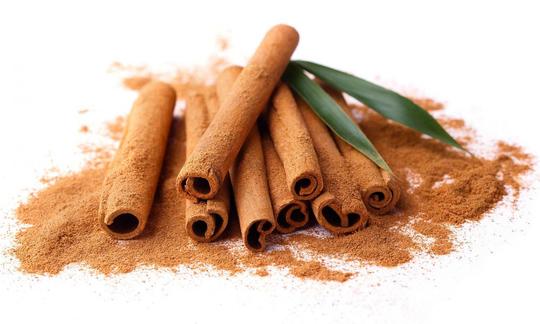

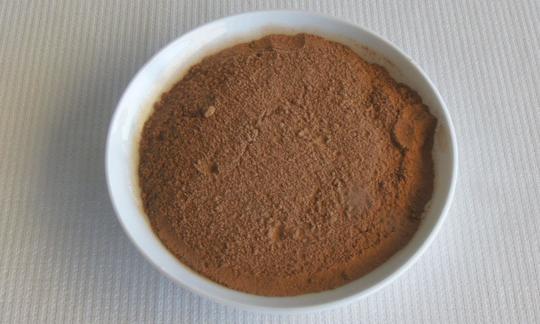

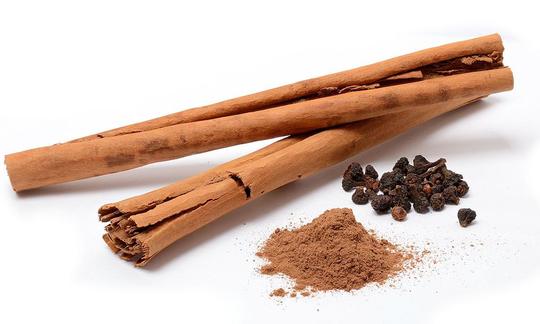

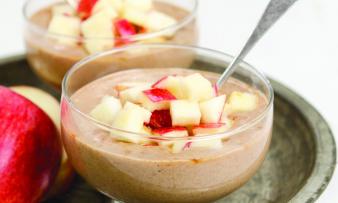
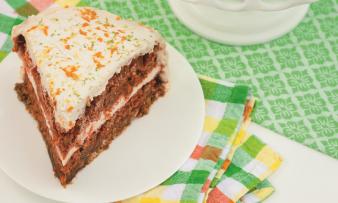
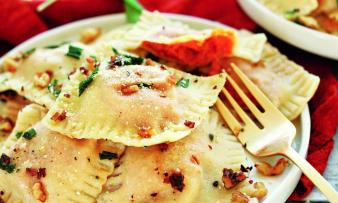





Comments